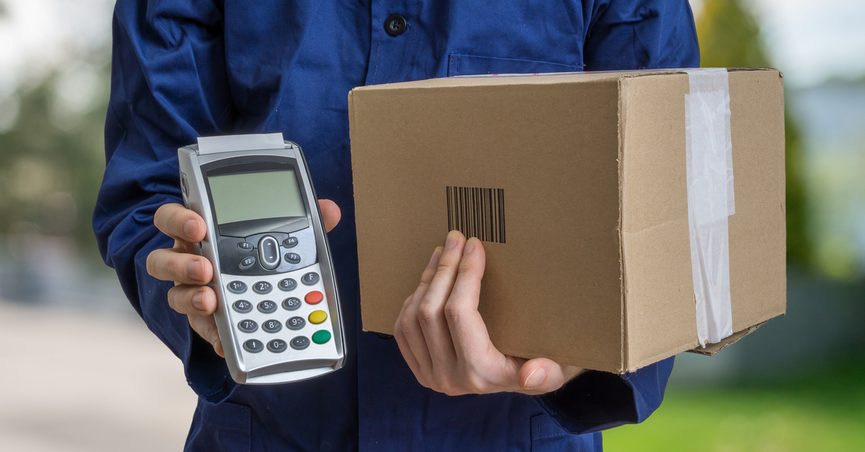Delivery of goods is carried out on the basis of a special contract drawn up between the two parties in advance. Usually, when forming the text of this agreement, information about the amount of the penalty for the delay in the delivery of the goods is indicated. If such information is not available, then the amount of compensation is calculated on the basis of legal requirements. Such a penalty is paid by a supplier who, for various reasons, was unable to deliver goods to his client at a strictly agreed time.
Types of Forfeit
Forfeit for late delivery of goods may be presented in different forms. It is represented by a certain amount of funds that is paid by the seller to the buyer if he cannot timely fulfill his obligations under the agreement. This payment can be presented in the following varieties:
- Negotiated. It is determined by the two parties when signing a direct formal agreement. It is prescribed in the text of the contract, therefore, it cannot be changed unilaterally in the future. Participants in the transaction can independently determine its size. The penalty for late delivery of the goods under the contract may be represented by a specific amount or percentage of the amount of the prepayment made.
- Legal. It is established in accordance with the requirements of the law, therefore it is used in a situation where the direct contract does not contain information about the penalty for late delivery of goods. Its size and terms of transfer are determined on the basis of the Federal Law “On Protection of Consumer Rights”. The penalty for late delivery of goods by law should be transferred voluntarily by the seller, but buyers sometimes have to face the fact that suppliers do not fulfill their obligations, and also do not want to transfer compensation. In this case, you will have to apply to the court for the forced collection of funds.
- Alternative. Such a payment implies that the seller may demand not only a forfeit according to the requirements of the law, but also special compensation related to the occurrence of unforeseen expenses.
- Credit. This type of payment is that the seller is forced to reimburse the buyer some of the funds that cover the costs, if the penalty determined by law, can not cover these costs.
The most commonly used payment is determined by the requirements of the law.

What is the payout amount?
The amount of the penalty for late delivery of the goods depends entirely on what information is prescribed in the contract. If this amount is determined in accordance with the requirements of the law, the following terms and conditions are taken into account:
- 0.5% of the prepayment amount. This type of penalty is applied in a situation where the buyer transferred in advance to the supplier a certain amount of funds, represented by an advance payment for goods. The size of such an advance payment must be officially fixed in the contract and confirmed by any payment documents. 0.5% of the amount for each day of delay is paid. At the same time, this even includes the day when, in fact, the goods were supposed to come to the buyer.
- 1% of the cost of goods. Such a penalty for each day of delay in the delivery of goods is described in Art. 20-22 of the law protecting consumer rights.
- 3% of the price of goods. This condition is usually specified directly in the contract.Such a large payment is applied when supplying any perishable products or drugs. At the same time, the amount of payment cannot be more than the total cost of the delivered goods.
Increasingly, buyers independently go to court to assert their rights. In this case, they can receive not only the penalty prescribed by law, but even compensation covering expenses arising in connection with the delay. Each case is considered by the court separately, so the judge can reduce or increase any payment.

Features of a legal penalty
When drawing up a contract between the buyer and the supplier, it is important to indicate as many important conditions as possible in the text of the agreement. But sometimes entrepreneurs or individuals do not think about the need to indicate the size of the penalty. Therefore, if the seller violates the terms of the agreement, and therefore does not deliver the goods to the buyer within the specified time, the buyer can recover from the negligent supplier only a legal penalty for delay in delivery of the goods. The rules for its accrual include:
- charged for each day of delay;
- the calculation is made by both parties to the transaction;
- the size of this payment depends on the amount of funds deposited as an advance payment, for which the content of official payment documents is taken into account;
- takes into account the period during which the goods were not actually delivered to the buyer.
In addition to the penalty, the buyer may demand from the supplier compensation for their expenses that arose as a result of the lack of goods.

Calculation Procedure
To determine the amount of the penalty for late delivery of the goods, you can do the correct calculation yourself. To do this, you must have the following data:
- the amount that was transferred to the seller in the form of an advance payment;
- the period during which the goods must be delivered to the buyer;
- penalty percentage specified in the formal agreement.
The following formula is used to determine the amount of payment: penalty = prepayment size * percentage specified in the contract * number of days of delay. If the amount received is greater than the down payment, then it is reduced.
Calculation Example
It is very simple to calculate the penalty for under-delivery or late delivery of goods. For example, a manufacturing company was supposed to put floor tiles in the store for the amount of 500 thousand rubles. The store transferred in advance an advance payment of 300 thousand rubles. On this day, the tile was not delivered. The delay is 20 days. The contract does not contain information on the amount of the penalty, therefore, the indicator is applied based on the requirements of the law.
Under such conditions, the penalty is calculated using the standard formula: 300,000 * 0.005 * 20 = 30,000 rubles. This is the amount the supplier must return to his customer. If he refuses to perform this process voluntarily, then the store representative may appeal to the court with a statement of claim.

What actions are carried out by the buyer?
If the buyer is faced with the fact that the seller really violated the delivery time, then he must figure out what actions should be performed in order to get a penalty from a negligent supplier. To do this, the following steps are implemented:
- a complaint to the seller is drawn up initially;
- it is formed in free form;
- The claim includes the data of the seller and the agreement drawn up earlier;
- The requirements for the seller, presented by the need to pay a penalty due to violation of the delivery time of the goods, are indicated;
- You can send such a claim by mail using a registered letter, and it is also allowed to personally deliver it to the supplier’s representative or send it electronically to the company’s email address;
- then you need to wait for a response from the seller, who must come within 10 days;
- funds can be returned by bank transfer or cash transfer;
- if the supplier refuses to pay compensation or simply ignores the claim, the buyer will have to go to court.
In court, you can demand the forced payment of a penalty for late delivery of goods from the seller.

What to do if there are no terms in the contract?
Sometimes, when drawing up an agreement, suppliers deliberately do not indicate the dates during which they must deliver goods to their counterparty. This leads to the fact that they significantly delay the process of providing goods. Under such conditions, the buyer must take into account the requirements of the law. He may submit a special request to the supplier, so the seller must then deliver the goods within 7 days. Otherwise, he will have to pay a penalty, the amount of which is specified in the contract or calculated on the basis of legal requirements.
If long-term cooperation is planned, then usually the parties decide to draw up an additional agreement to the contract in order to clearly control the time period during which the goods should arrive.

Claim Rules
Most often, suppliers voluntarily list a forfeit, because they do not want to resolve differences through the court. Therefore, they immediately transfer the required amount after receiving a claim from the buyer. This claim must contain the following information:
- information about the buyer and seller;
- details of the contract on the basis of which the goods are delivered;
- date of transfer and amount of prepayment;
- percentage of penalty for late delivery of goods;
- the date the seller was supposed to deliver the goods;
- rules for calculating the penalty;
- the requirement to transfer the specified amount within 10 days from the receipt of the claim;
- it is indicated that if the supplier refuses to fulfill the above requirements, the buyer will be forced to go to court.
A copy of the contract and payment document confirming the prepayment is attached to the claim.
Which court should I contact?
If you can’t get the forfeit from the supplier in a peaceful way, you will have to file a lawsuit in court.
If the amount does not exceed 50 thousand rubles, then you need to contact the justice of the peace. If the amount exceeds 50 thousand rubles, then the lawsuit is filed with the federal court. You can contact the court at the place of residence of the buyer or the legal address of the supplier.
In such cases, it is not necessary to pay a fee. It is advisable to seek help from a lawyer to simplify the process of collecting funds. If the court takes the side of the plaintiff, then the costs of a lawyer will be covered by a negligent supplier.

Supplier refuses to pay funds even after a lawsuit
Under these conditions, the buyer will be forced to turn to the bailiffs for the forced collection of funds. Bailiffs may seize the supplier’s accounts or use other methods of pressure.
Most often, large sellers meet their customers, so they voluntarily list the penalty at the request of the buyer.
Conclusion
If the supplier violates the delivery time, the buyer has the right to demand a forfeit from him. Its size can be prescribed in a formal agreement or determined on the basis of legislative requirements. It is transferred within 10 days from the moment the seller receives a claim from the buyer.
If the supplier refuses to pay the penalty, the buyer can file a lawsuit with the court. Additionally, he can write a statement to Rospotrebnadzor.
